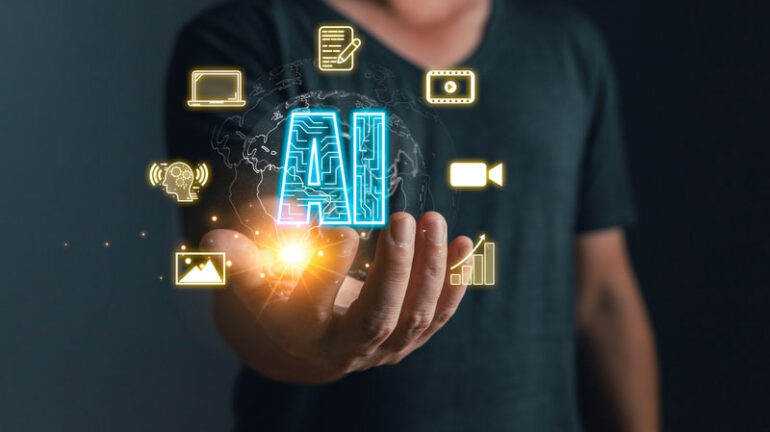
The digital world is evolving rapidly, and one of the most notable advancements is the rise of artificial intelligence (AI) bots. These bots, from customer service assistants to sophisticated AI companions, are transforming the way we interact with technology, businesses, and even each other. The growing popularity of AI bots can be attributed to improvements in machine learning, the availability of vast amounts of data, and the demand for more efficient communication solutions.
What Are AI Bots?
AI bots, also known as chatbots, are software programs designed to automate tasks. These tasks can range from simple responses to complex conversations powered by natural language processing (NLP) and machine learning algorithms. These bots learn from interactions, becoming more responsive over time, and can be integrated into platforms like websites, apps, and messaging services.
The primary goal of AI bots is to simulate human-like interactions, allowing businesses to communicate with their customers more easily and for individuals to access services quickly and efficiently.
Factors Contributing to the Popularity of AI Bots
Advances in AI and NLP
In recent years, significant advancements have been made in AI, particularly in machine learning and natural language processing. Unlike earlier bots that could only respond to pre-programmed inputs, today’s AI bots can engage in complex conversations, provide accurate answers, and adapt to different user behaviors. Technologies like GPT (Generative Pre-trained Transformer) have played a key role in developing these capabilities.
Efficiency and Cost Savings
AI bots allow businesses to streamline customer service, marketing, and sales operations. They can handle thousands of queries at once, reducing the need for large customer support teams and lowering operational costs. Additionally, they operate 24/7, ensuring that customers receive timely assistance without human intervention.
Personalization
AI bots can offer personalized experiences by analyzing user data, such as past interactions or preferences. For example, e-commerce sites use bots to recommend products based on browsing history, while health apps provide personalized fitness plans. This tailored experience deepens customer engagement and increases brand loyalty.
Conversational Commerce
Conversational commerce, where transactions are completed through voice or text conversations, has fueled the growth of AI bots. Bots help guide users through shopping processes, answer product questions, and even complete purchases directly within messaging platforms, providing a seamless shopping experience.
Accessibility and Inclusivity
AI bots are offering new opportunities for accessibility. Voice-activated bots allow individuals with visual impairments to interact with technology, while multilingual support breaks down language barriers for global users. This inclusivity has broadened the appeal and utility of AI bots across diverse audiences.
Current Applications of AI Bots
Customer Service
AI bots are widely used to handle customer support tasks such as answering FAQs, guiding troubleshooting processes, and processing returns. Companies like Amazon and Netflix integrate bots to improve response times and overall customer satisfaction.
Healthcare
In the healthcare sector, AI bots assist with scheduling appointments, providing information about medical conditions, and offering preliminary diagnoses based on symptoms. For example, Babylon Health’s chatbot analyzes symptoms and advises patients on whether they need medical attention.
E-commerce
AI bots help e-commerce businesses by guiding customers through product searches, making recommendations, and assisting with transactions. Tools like Shopify’s Kit automate marketing tasks and manage them through conversational interfaces.
Education
AI bots are increasingly used in education as virtual tutors or assistants, helping students with specific subjects, answering questions, and providing feedback on assignments. Duolingo, for example, uses bots to help users conversationally practice language skills.
Financial Services
Financial institutions have adopted AI bots to handle routine banking tasks, such as checking account balances, processing payments, and answering questions about loans. Bank of America’s chatbot Erica is an example of how bots streamline customer interactions.
The Future of AI Bots
The future of AI bots promises even greater sophistication. As AI technologies continue to advance, bots will become capable of handling more complex tasks and offering more personalized, context-aware services. Some potential developments include:
- Emotional Intelligence: Future bots may recognize and respond to human emotions, making interactions more empathetic and natural.
- Integration with IoT: AI bots will likely become more integrated with the Internet of Things (IoT), allowing for seamless control of smart devices through voice or text commands.
- Autonomous Decision-Making: As bots become more intelligent, they could make autonomous decisions on behalf of users, such as managing finances or scheduling.
In conclusion, AI bots are rapidly becoming an essential part of the digital ecosystem. Their ability to improve efficiency, personalize experiences, and enhance accessibility has made them indispensable across industries. As AI technology continues to advance, these bots will continue to transform how we interact with businesses, services, and the digital world.